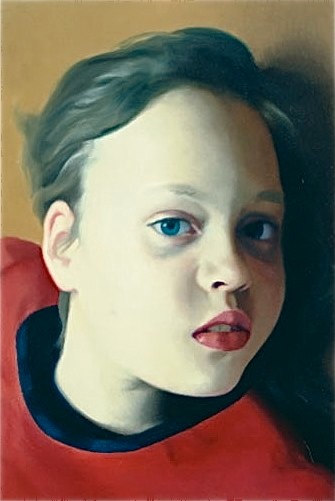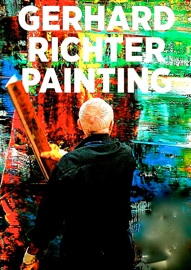The Method to My Madness...
John Grant
studio@grantartistry.com
I am an artist. Many say it is vainglorious to take that title for oneself---but, nevertheless---I am an artist.
What is the method to my madness? Currently, I am trying to do art by two means.
First, I “do art” mostly by what the marketplace dictates. I do art to meet a demand set forth by my clients (see "Man and Dog," right). With a family to feed, so often my art must have a monetary compensation for my great expenditure of time. Most often, customers demand highly-realistic pencil drawings of snapshots which hold for them great sentimental value.
Second, I do a little art without thinking. I attempt to separate my mind from my art, and like the Nike adage, I “Just do it.” This second “thoughtless” method is much what I prefer. I hope to one day do Abstract Expressionism like
Gerhard Richter (1932-). He did not always do Abstract Expressionism. In fact, in his early days, Richter painted
works like "Lesende" (right) and "Betty" with great realism. Yet, they both convey with great expression the inner beings of both of the figures. Conveying inner essences is what I try to do with my artworks, whether they are abstract or realistic.
To the left is an example of a Figurative work that I did in a loose manner.
Johannes Vermeer (1632-1675), possibly the greatest Realism painter of all time, achieves amazing Realism in his painting of a young woman entitled "A Young Woman Asleep" (right). In this painting, Vermeer works with not only Realism, but also with an early version of the yet unknown
style Neoplasticism (left) (see
Piet Mondrian, 1872-1944). How did Vermeer achieve this blending of styles? Look closely at his painting. In the open doorway, one sees a white ground with a 'grid' of horizontal and vertical black lines (See the threshold line, the legs of the distant table, and the vertical lines of the mirror on the wall in the far room?), much like Mondrian's Neoplastic paintings which he painted 250 years later (see "Composition II in Red, Blue, and Yellow").
My point in sharing these three works by Richter and Vermeer is that artists can successfully mix and match styles, even within the very same painting.
Today, during a conversation in our kitchen, my son encouraged me to stick with what sells and with what I can do (realistic pencil drawings). But, art, I think, should be free. Even rigid, uptight, and often boring realism should be free.
From a distance, one would swear that Richter's "Betty" (right) is a photograph. But upon closer inspection, the brush strokes in her hair are visible. They are loose, spontaneous, and real. Also, Betty's countenance in the painting is not static, but laden with energy and potential. It feels
as though at any moment, she could emerge out of the canvas and whisper an important message into your ear. Her shirt also is painterly (and even, a little reminiscent of
Star Trek also). Richter's adept liveliness in Betty is what I hope to one day capture in my work!
enough

 works like "Lesende" (right) and "Betty" with great realism. Yet, they both convey with great expression the inner beings of both of the figures. Conveying inner essences is what I try to do with my artworks, whether they are abstract or realistic.
works like "Lesende" (right) and "Betty" with great realism. Yet, they both convey with great expression the inner beings of both of the figures. Conveying inner essences is what I try to do with my artworks, whether they are abstract or realistic. To the left is an example of a Figurative work that I did in a loose manner.
To the left is an example of a Figurative work that I did in a loose manner.










